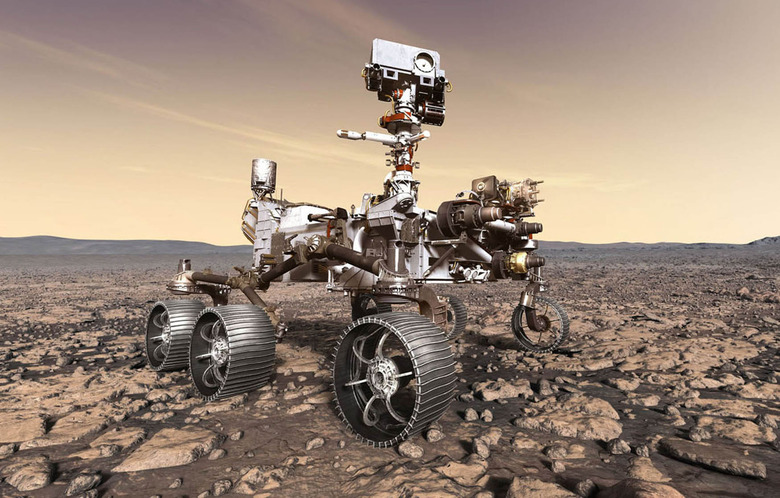NASA's New Mars Rover Is Powered By A Decades-Old Mac Chip
NASA's new Perseverance rover has been on Mars for less than two weeks, but science fans are already chomping at the bit for any news they can get related to the mission. What will the new rover find? Will it be able to detect ancient organic compounds or possibly even signs of long-dead life forms? Did Martians really exist in some form? We might eventually get those answered, but not yet.
In the meantime, we're learning more and more about the rover itself. We already knew a lot about its instruments and various components, like its nuclear power supply, but some interesting tidbits seem to have fallen through the cracks... until now, that is. In a new article by NewScientist, we are treated to one of the more mind-boggling factoids about the rover: It's powered by the same kind of chip that Apple used in iMacs from the PowerPC era.
I know what you're thinking. You're thinking "How can this be true?" or perhaps "Why would NASA spend literally billions of dollars on a new rover and then slap a processor from 1998 in it?" Your concerns are totally understandable, but there's actually a very good reason why NASA leans on such ancient technology when it comes to building the brains of its fancy robots.
Knowing what technologies work well on Earth — such as cutting-edge processing chips packed with billions and billions of transistors — doesn't mean much when a device is headed into space or, better yet, another planet. When you're building such a machine you need something you know is going to work, and work for a very long time with no maintenance whatsoever. So, you lean on processors that have decades of proven reliability under their belt, like the PowerPC 750.
To be totally clear, the processors NASA uses are not garden variety PowerPC chips. Sure, they're a tiny fraction as fast as the chip you carry around inside your smartphone all day, but the processor in Perseverance is built specifically to handle whatever space can throw at it. And by "whatever," I mean radiation.
The RAD750, which is the version of the decades-old processor in Perseverance, is incredibly resilient to radiation exposure. It's capable of withstanding up to 1,000,000 Rads. To put that in perspective, the first responders at Chernobyl that suffered such incredibly severe reactions to the radiation are thought to have been exposed to up to 16,000 millisieverts (mSv), which is equivalent to 1,600 Rads.
The chips have to be hardened in such a way as to make them impervious to radiation and charged particles speeding through space. That's not easy... or cheap. Despite their lack of speed when compared to modern chips, each RAD750 costs over $200,000. So, you can understand the benefits of having such a chip on board Perseverance. It won't run Fortnite, but it will power Perseverance for years and years to come.
